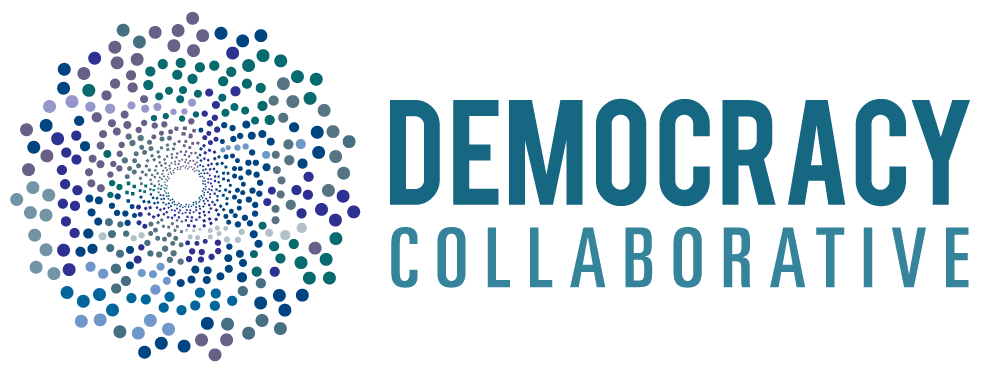Fostering Transatlantic Connections: From Preston to Maryland
Earlier this month, the Universities at Shady Grove in Montgomery County, Maryland, United States convened a group of over thirty different anchor institution leaders and community stakeholders for a virtual exchange with experts from Preston City Council and the University of Central Lancashire in the north of England. This learning webinar highlighted the growing transatlantic partnerships being forged between Community Wealth Builders in the US and in the UK and Europe, that The Democracy Collaborative has been helping to foster from Scotland to Chicago, Australia to London. It focused on how CWB can be implemented in different places to create more equitable and just communities, and the role that higher education has to play in fostering this change as both an economic engine and community resource. Alongside sharing best practices in anchor institution behavior, participants discussed how best to collaborate across diverse institutions and what it looks like to be a truly community-serving and responsive educational institution in a period of crisis and precarity.
Due to its unique structure as a partnership of nine out of the twelve universities in the University system of Maryland (USM), the Universities at Shady Grove (USG) offers an exciting opportunity not only as an anchor institution itself, but as the center of a broader state-wide collaboration of other anchor institutions. Already, USG has committed to advancing CWB in its strategic plan and is actively engaging in local hiring and procurement in Montgomery County while also investing its resources in support of the incubation, expansion, and capacity building for local entrepreneurs and community organizations. Furthermore, as a community rooted campus, committed to diversity and inclusion, whose students are largely local first-generation college students, local residents pursuing continuing education later in life or advancing their careers, USG is well positioned to educate and train future Community Wealth Builders and is integrating CWB teaching and programming into its curriculum offerings.
USG is also committed to leveraging its unique position and influence in the County to advance a broader conversation on CWB with its partners in government, business, and other anchor institutions. This collaborative commitment was on full display in this transatlantic exchange, with representatives not just from all levels of USG’s administration and faculty, but from the University of Baltimore, Montgomery County Economic Development Corporation, Montgomery County Government, Montgomery County Council, Montgomery County Planning Department, the Greater Washington Board of Trade, Montgomery County Chamber of Commerce, and Smart City Works Innovation Hub in attendance. As one of the wealthiest counties in the United States, right outside the nation’s capital, Montgomery County has many assets, but also many disparities. Those who attended came eager to explore how they can use a CWB approach to directly address these disparities and build equity into the core of the local economy for the health of the whole region.
In the webinar, participants heard from Dr. Alexis Holden and Professor Julian Manley from the University of Central Lancashire (UCLAN) on the university’s role in what has now become known as the Preston Model of Community Wealth Building in the United Kingdom. Professor Manley emphasized the interconnectedness of the ecosystem and the importance of education, research, and training in cooperative systems, highlighting the influence of the Mondragon worker-owned cooperative network in Spain. Sue Smith from the University of Central Lancashire was also introduced. Sue Smith from UCLAN also presented on student development and entrepreneurship and the importance of supporting graduates and projects to foster changemaking.
Finally, TDC Fellow, who also leads Preston City Council, Matthew Brown discussed the city's transition from traditional economic development to CWB and the importance of local government, policy, and political action in imbedding and sustaining CWB. By supporting a more democratic economy, Preston’s CWB efforts have already produced substantive impact in people’s daily lives and in the health of the community. Importantly, Brown spoke to how city government has used its procurement and other economic levers to re-root and re-circulate wealth for the people who live and work in Preston, emphasizing that this is a key role for all anchor institutions to play. Across the UK, as in the US, universities and colleges along with other anchor institutions in places like Birmingham, Glasgow, and London are participating in collaborative networks - some even signing on to charters - committing not only their educational capital, but their economic influence in support of CWB.
At the end of the session, participants broke into breakout groups to discuss the role of educational institutions and local government in advancing CWB, where they asked presenter questions, digging into what they learned about Preston, and discussing what a collaborative CWB approach could look like in the context of Montgomery County. There were many areas of synergy and alignment, particularly around community engagement, student learning, and entrepreneurship. In the end, Montgomery County’s approach to CWB must be specific to the context and the assets of their place and the opportunities and challenges therein. The collaborative possibility represented by USG and the region-wide perspective demonstrated in this event point to the emergence of a powerful model for coordinated and integrated change at scale. This exchange is just the beginning of an ongoing co-learning relationship where the experience from Preston can inspire new thinking and different models in Montgomery County that will then ripple back to Preston and the growing global Community Wealth Building movement.
Sarah Mckinley is the Director of Community Wealth Building Programs at the Democracy Collaborative

